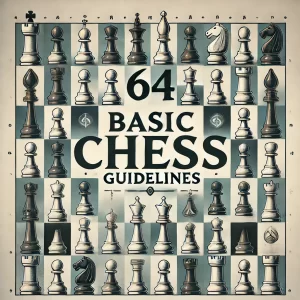Chess is often a game of razor-thin margins, where a single move can swing the fate of the match. Amid the complexity of strategy and tactics, there lies a unique move known as “castling.” While it may seem simple on the surface, castling is a highly strategic move with both defensive and offensive potential. Let’s uncover the layers behind this special chess move.
What is Castling?
Castling is a chess move that simultaneously moves the king and one of the rooks. This move is the only time in chess when you’re allowed to move two pieces in one turn. Castling is primarily done for two reasons: to safeguard the king (usually) and to connect the rooks. The FIDE regulations offer a clear outline of how and when you can castle.
The Rules of Castling
- King and Rook: Neither the king nor the chosen rook should have moved prior in the game.
- Clear Path: There must be no pieces between the king and the rook.
- No Check: You can’t castle out of, through, or into check.
Failure to adhere to these rules makes the castling move illegal. You can find an in-depth explanation on the Wikipedia page on castling.
Historical Background
The castling rule evolved over time and became standardized in the 19th century. Before this, various forms of the rule existed. The modern rule was likely established to speed up the opening phase and add a layer of complexity to the game.
Strategic Importance
Defensive Benefits:
- King Safety: One of the main reasons to castle is to tuck the king behind a wall of pawns, where it is generally safer.
- Rook Activation: Castling connects the rooks, which can then be used more effectively in the game.
Offensive Benefits:
- Central Control: Often, after castling, your rooks have easier access to the center of the board.
- Flexibility: With the king safely tucked away, you have more leeway to initiate complex tactical sequences without worrying about king safety.
Notable Games Featuring Castling
Castling has played a pivotal role in many legendary games, such as the 1954 World Chess Championship match between Mikhail Botvinnik and Vasily Smyslov, where strategic castling significantly impacted the game dynamics.
Conclusion
Castling may seem straightforward, but it’s steeped in strategic depth. Whether you’re a seasoned player or a newcomer to the world of chess, understanding the intricacies of castling can significantly elevate your game. So the next time you sit down for a match, remember: castling isn’t just about moving your king to safety; it’s a powerful strategic tool with a rich history and nuanced applications.



